I decided to go in search of a frog that I had never before seen. Green-thighed Frogs (Litoria brevipalmata) are a strange species. They are treefrogs that spend much of their time hidden in low shrubbery and leaf litter. They are easiest to find when they are calling, but they very rarely do this.
For a long time, the species was considered very rare because few people ever found them. Then, a study in 2006 discovered that this frog normally calls (and breeds) for one day a year, and some years not at all! Heavy rain (at least 50mm in a 24-hour period) is apparently required to stimulate breeding activity, which is something we hadn’t had for a long time. What’s more, if you don’t go looking on the precise day the rain falls, chances are you’ll miss the narrow calling window.
I had read that there was a population of Green-thighed Frogs inhabiting the Pine Mountain Bushland Reserve close to my home. So that’s where I headed in February 2020 following the biggest storm since 2018. The noise from the frogs was ear-splitting, and I’ll never do that again without ear plugs! Most of the noise came from Graceful Treefrogs (Litoria gracilienta), Bleating Treefrogs (Litoria dentata) and Green Tree-frogs (Litoria caerulea), all species we get at home when the dam fills with water.
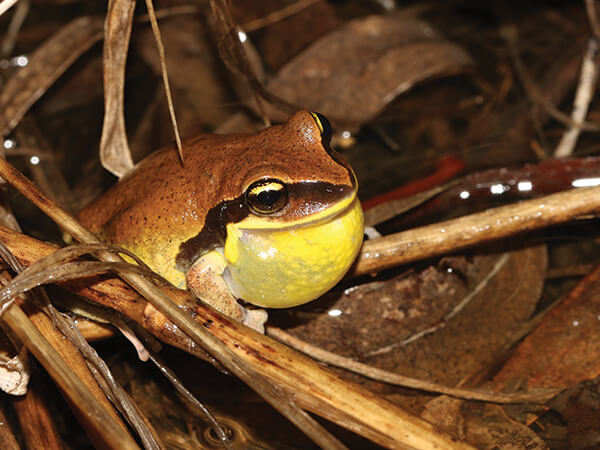
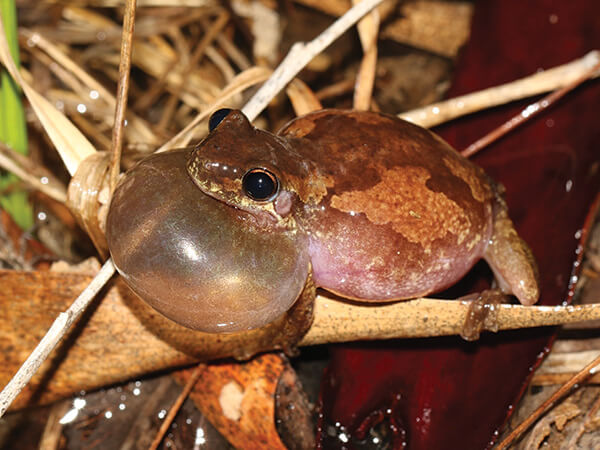
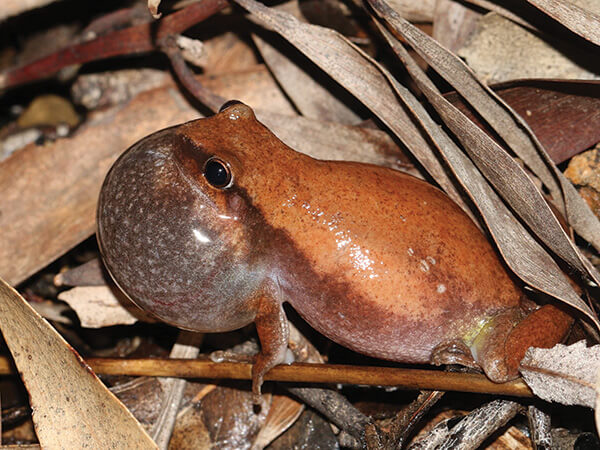
There were also a few Desert Treefrogs (Litoria rubella) and plenty of Scarlet-sided Pobblebonks (Limnodynastes terraereginae) in the reserve, a species we are very familiar with at home.
Despite all these other distractions, it wasn’t long before I found my target. They have not been well-named, as they are more yellow than green. Also, the bright lips, throat and sides are far more striking than the (mostly concealed) hind legs. All in all they are a pretty frog.
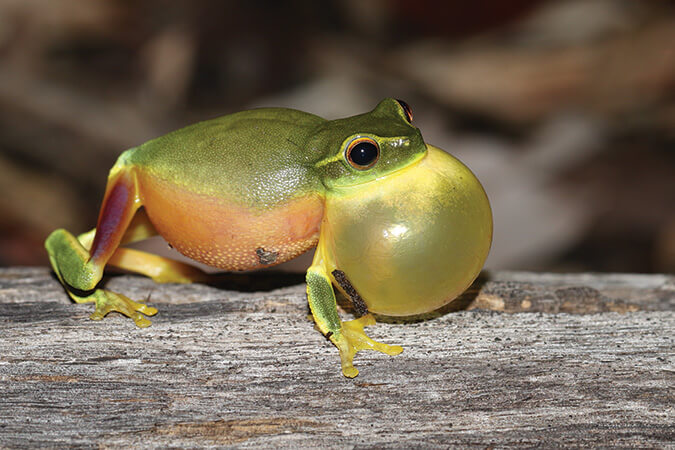
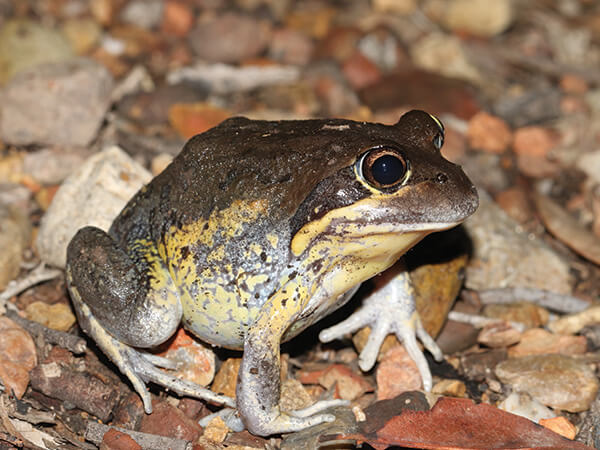
Green-thighed Frogs ended up being one of the most numerous species present, although not as loud as their neighbours. Curiously, they were only found in one of the three ponds within the reserve. They are obviously particular about their habitat requirements. Their favoured pond had a much denser ground-layer of debris and shrubbery than the other two ponds. I wonder how isolated this little population is, and whether more populations are scattered throughout the many privately owned dams and ponds in Pine Mountain. It’s up to local residents to get out there after heavy downpours to find out!
I feel privileged to have been able to share their one day of song for 2020.
Article and photos by Chris Wiley
Land for Wildlife member
Pine Mountain, Ipswich
View Full Newsletter

I found one after very heavy rain at night a few years ago near Landsborough during a fauna survey for a proposed water treatment plant. I took it to Steve Wilson at the Qld Museum to photograph and release it back where I found it. I think the find got Council to shift the position of the outlet.
Great article, thank you , we may have heard them at home in Ferny Glen . Two are calling now . Will submit to Frog I D , very exciting .
I just found one after some heavy rain this afternoon (Narangba – about 70km north of Pine Mountain), near my front door. They are great jumpers, just like rocket frogs. We live in a residential development near the edge of Burpengary Creek so it makes sense why I found one in my garden/front door.
Thank you for the article. I discovered this unusual frog tonight near Howard, Qld. I took a photo to investigate what it was and believe it to be the green-thighed frog. I also discovered it was an endangered frog so allowed it to roam free. Yet, I felt it necessary to report the sighting as this small town is slowly growing in size. If further information is warranted for further investigation, I’m happy to share this information.
Hi Rick. If you wish to share your observation, we suggest taking a photo and putting it on iNaturalist for identification and the public record.